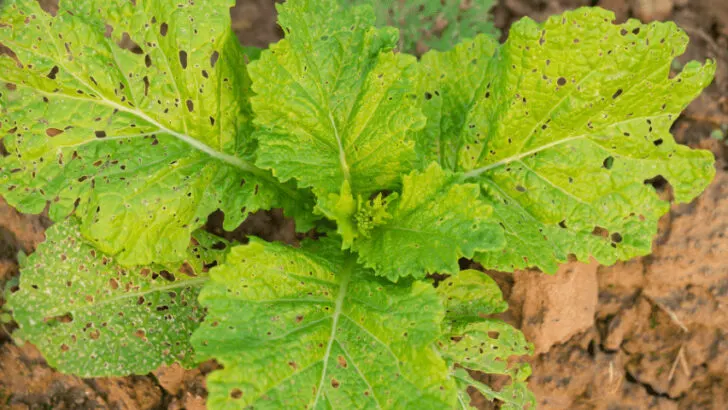What is eating my plant leaves? Gardening may be frustrating, especially when pests keep attacking your plants. You see the damage, but often you don’t know immediately who did it.
Many garden pests love munching on plants and are especially fond of fruits and vegetables.
If something’s been nibbling on the plants in your garden, you’ll want to get to the bottom of the problem before the plant is seriously damaged.
Pests can destroy plants if you don’t take action.
How can you identify what’s eating your plants?
Inspect your plants and look for signs that might tell you what type of pest you’re dealing with, such as droppings, insect larvae, or eggs.
You also learn more about common garden pests.
What is Eating my Plants Leaves?
Insects, slugs, snails, and rodents eat your plant leaves. Some of these pests are more active during the day, while others attack plants at night. If you can successfully identify the pest targeting your plants, you can do more to keep your plants safe.
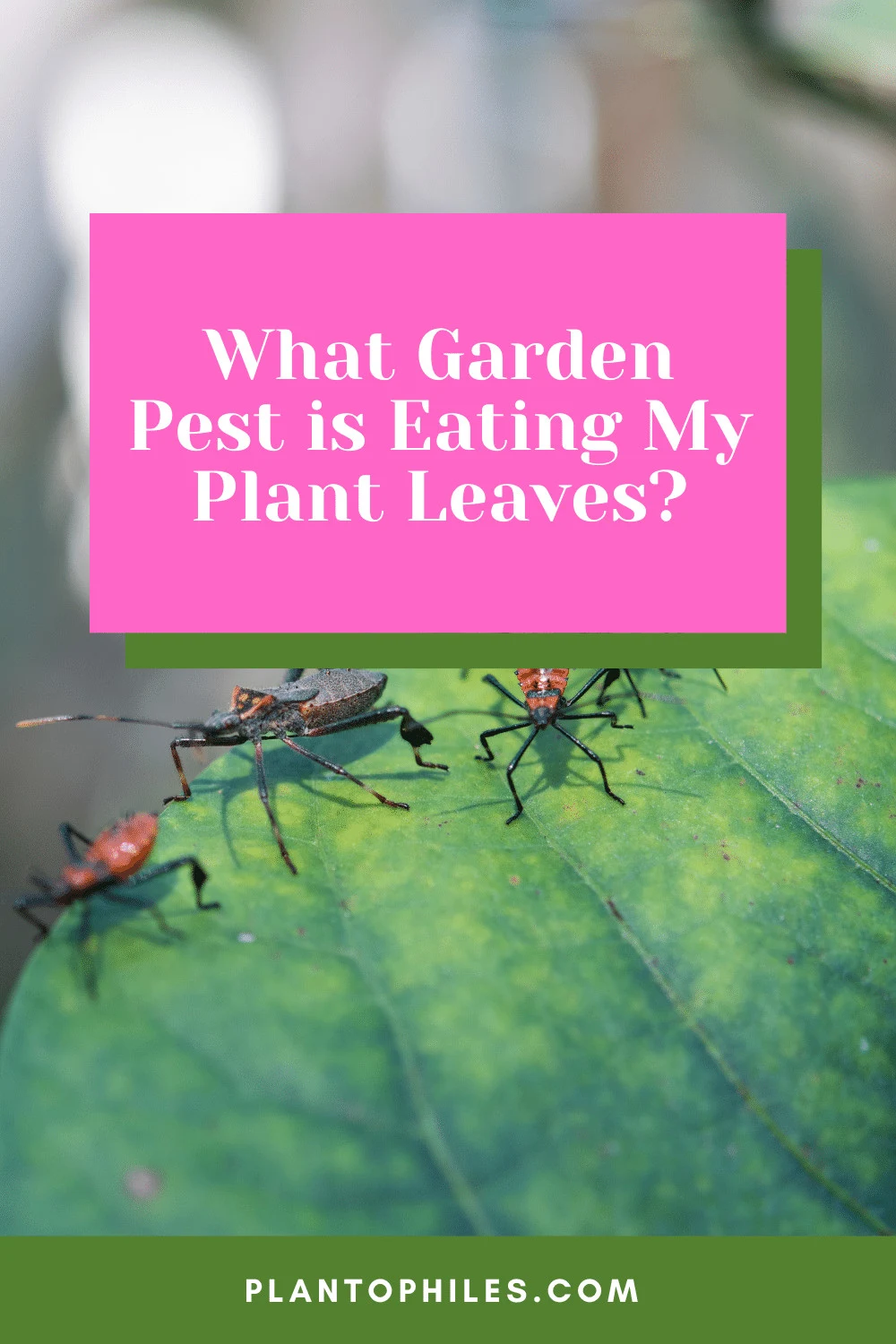
Table of Contents
Pests that Eat Leaves
1. Woodchucks
Woodchucks usually feed on plants during the afternoon.
Not only do they eat leaves and vegetables, but they trample other plants in your garden.
Since woodchucks can quickly destroy a garden, you should be proactive if you spot a woodchuck in your yard.
The easiest way to keep woodchucks out is to construct a garden fence.
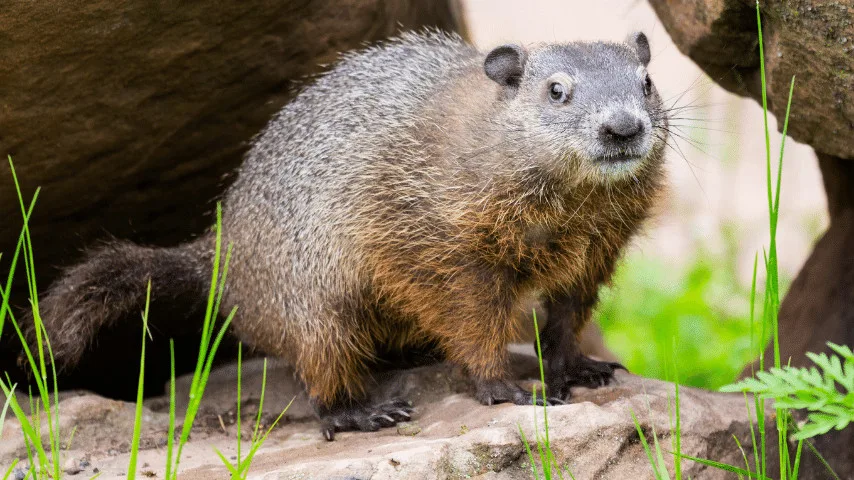
2. Rabbits
Rabbits typically eat entire leaves rather than take a bite out of a plant.
They feed throughout the evenings, nights, and early mornings.
You can usually identify rabbit damage by looking for droppings or footprints.
Rabbits feed near their caves, so if you’ve seen rabbits in your yard, there’s a good chance they’re eating your leaves.
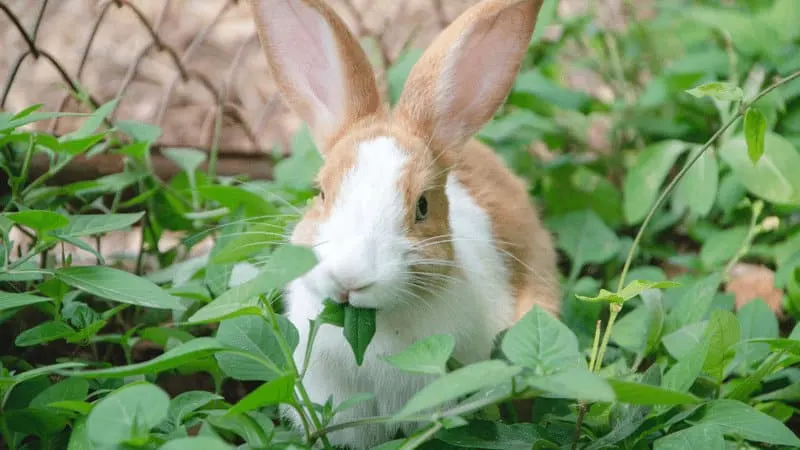
3. Voles
Voles typically chew on both the leaves and stems of seedlings. They do most of their feeding at night.
When voles move around, they dig shallow burrows.
In addition to leaf damage, you’ll see holes in your garden if it’s been infested by voles.
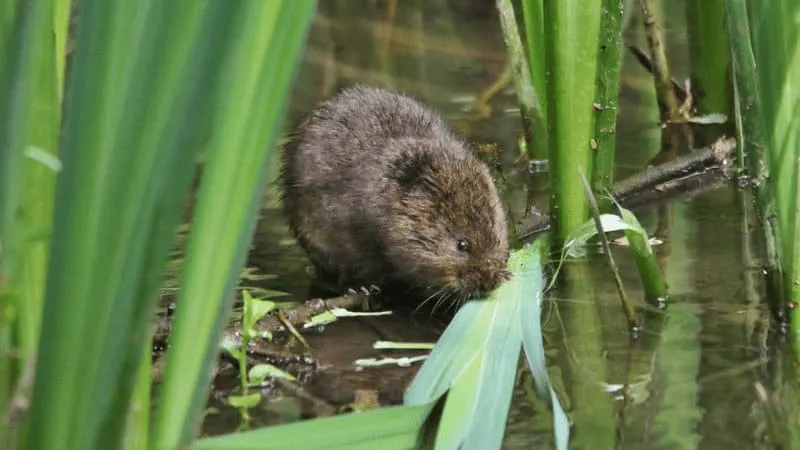
4. Mice
A mouse will eat almost anything to survive, including plant leaves.
Not only will mice attack plants in your garden, but they may also feed on plants inside your home.
When mice feed on plants, they leave droppings behind, contaminating the soil in your garden.
If you see mice droppings, they should be cleaned before your plants are damaged.
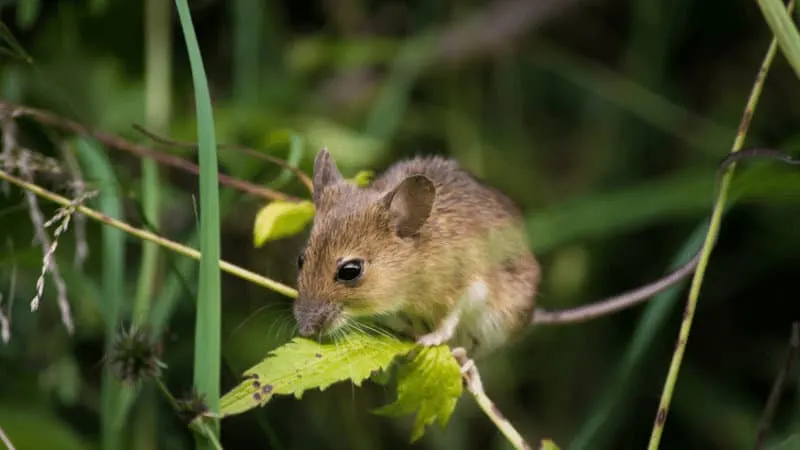
5. Slugs
Slugs typically chew small to medium-sized holes in leaves. A snail’s trail of slime is obvious evidence of its presence.
Since slugs are nocturnal, they’ll almost always attack your garden at night. Early spring is when slugs are most active.
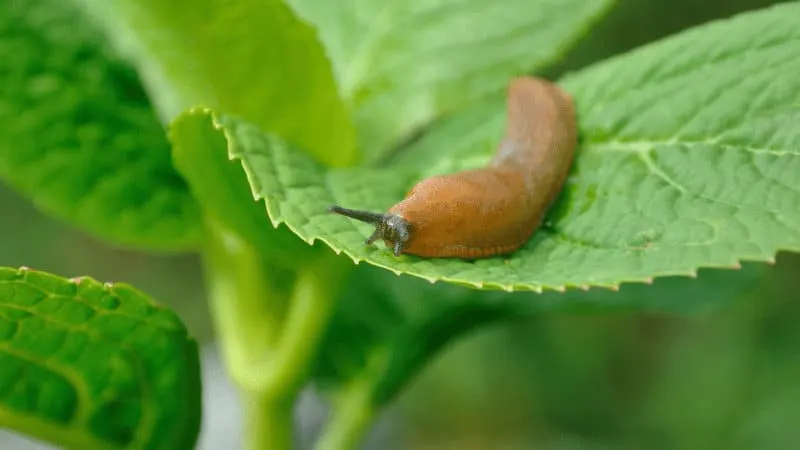
6. Snails
While snails usually eat the leaves of younger plants, they’ll much on almost any plant in your garden.
Like slugs, snails leave behind slime trails, usually on the surfaces of leaves.
Snails eat primarily at night and early in the morning.
Since snails hibernate during the winter, they feed more heavily at the end of summer and fall.
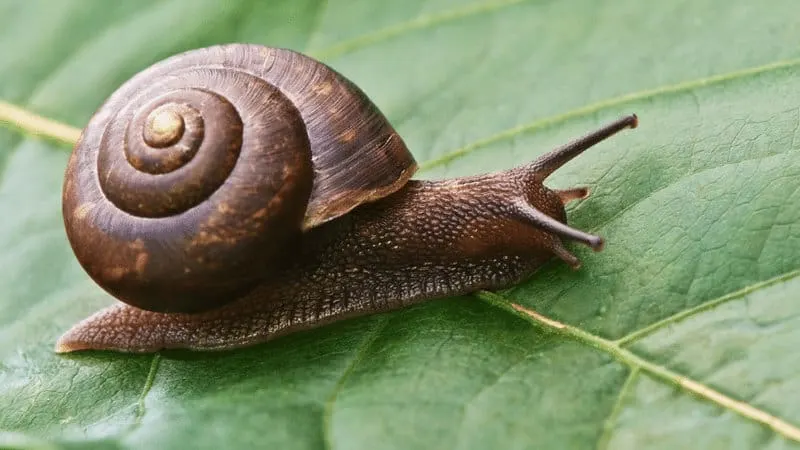
7. Aphids
When aphids attack a plant, they do it en masse. You can usually spot aphids swarming around a plant’s upper leaves.
Early dawn is when insects like aphids are most active.
Aphids are likely to attack your plant if the leaves and stems of the plant have begun to wilt.
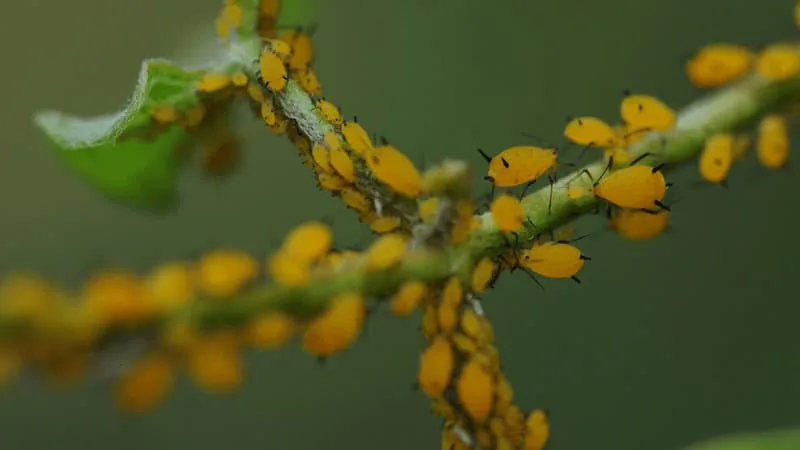
8. Caterpillars
Caterpillars usually leave large holes in the leaves of the plants they feed on.
Some types of caterpillars, like cutworms, also feed on the stems of plants, which can cause plants to topple over.
This insect is known for its healthy appetite and feeds throughout the day, especially in summer.
They usually chew on the outer edges of leaves instead of leaving holes in a leaf’s center.
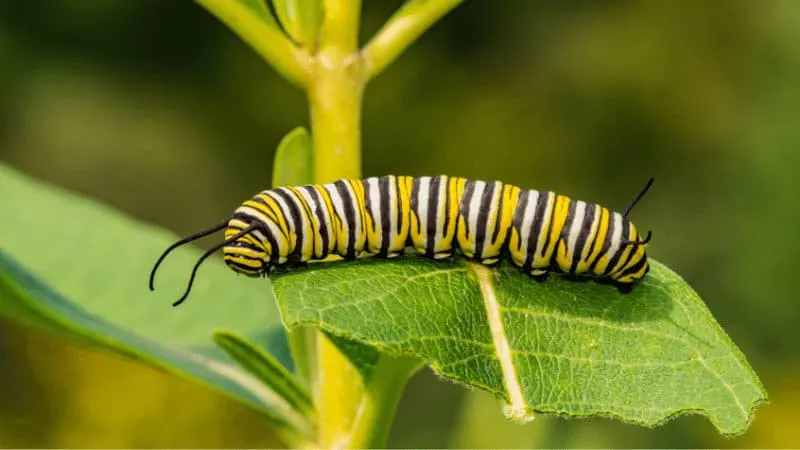
9. Sawflies
While people often mistake sawflies for caterpillars, they’re wasp larvae.
Sawflies typically feed on plants in a group, which means they can do much damage quickly.
When sawflies eat leaves, they may leave holes behind or skeletonize the leaf, eating all of the tissue in the leaf’s veins.
Sawflies may leave behind webs, or tiny larvae called gall.
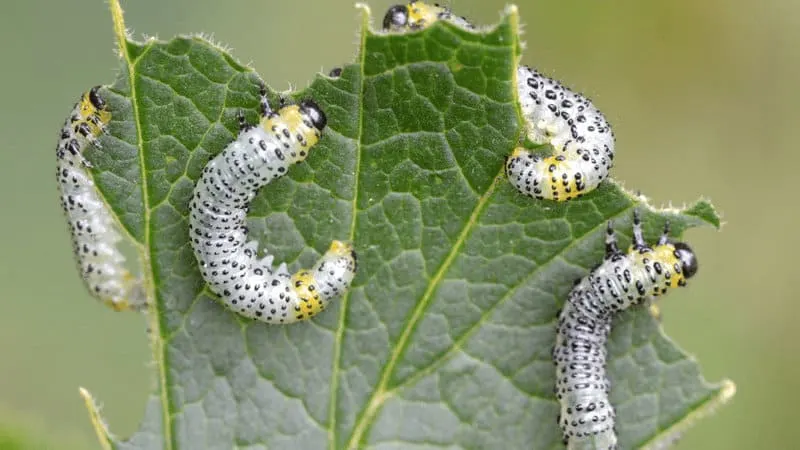
10. Ants
Ants don’t actually eat leaves, but leaf-cutter ants will bite off chunks of leaves and carry the pieces back to their nest.
The leaves are fed to a fungus that the ants eat.
If your garden has leaf-cutter ants, you may see ants carrying pieces of leaves away.
These ants forage in groups and can be active day and night.
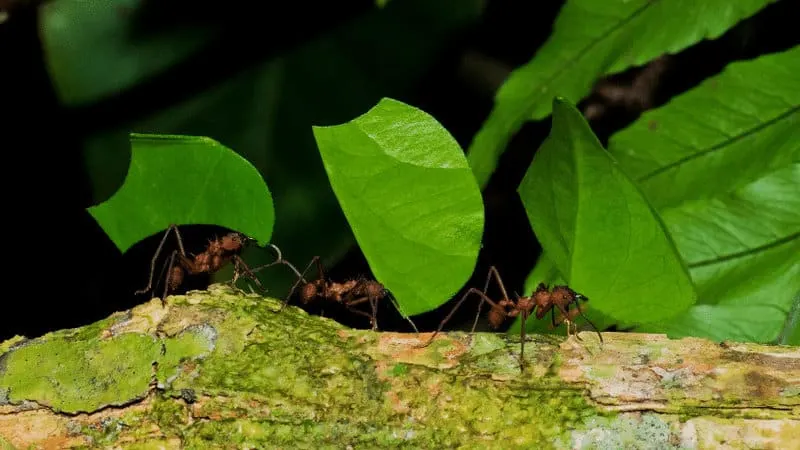
11. Grasshoppers
If grasshoppers have been feeding on your plants, they’ll usually leave behind ragged holes.
In addition to chewing on leaves, grasshoppers eat stems, fruits, and vegetables.
Although grasshoppers are active during the day, they also feed at night.
Grasshoppers may lay eggs in the soil around your garden.
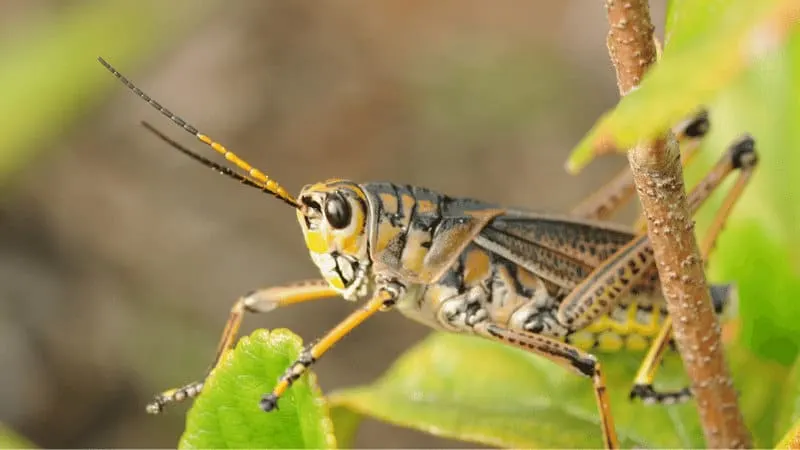
12. Beetles
If you spot beetles in your garden, they’re likely Japanese or asparagus beetles.
Both types of beetles are very active, and if they’re attacking your plant, you should be able to spot them out in the open.
These insects, like beetles, begin to eat in late spring or early summer.
While a single beetle won’t cause much damage, it can wreak havoc on a group garden.
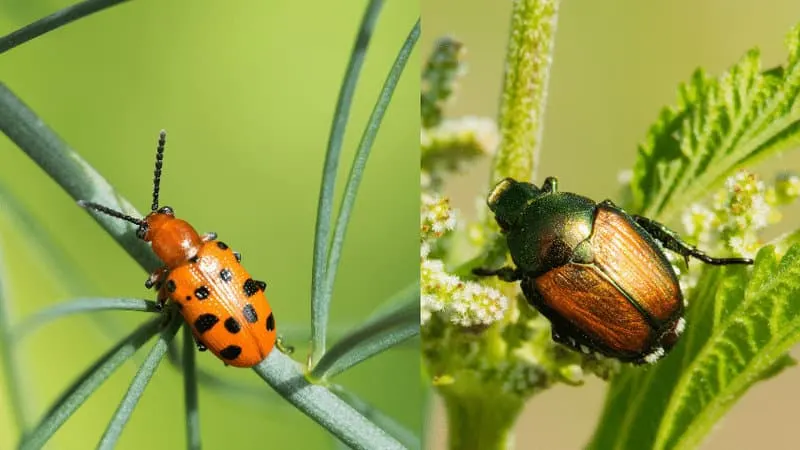
How to Deal With Garden Pests
The best way to protect your garden from rodents and other mammals is to shield your plants with fencing or row covers.
Certain smells, such as garlic, chili powder, or predator urine, can also help to keep these critters away.
You may remove insects off the plant by hand and drop them into soapy water if you can detect them in motion.
You can also try leaving open containers of soapy water on the ground around your plants.
Dusting plants with diatomaceous earth can also repel many pests.
Diatomaceous earth is formed from the leftovers of aquatic organisms called diatoms.
While diatomaceous earth is non-toxic and isn’t dangerous to people, it can be fatal to slugs, beetles, and insects.
When these creatures come into direct contact with the substance, it dries out their bodies, eventually killing them.
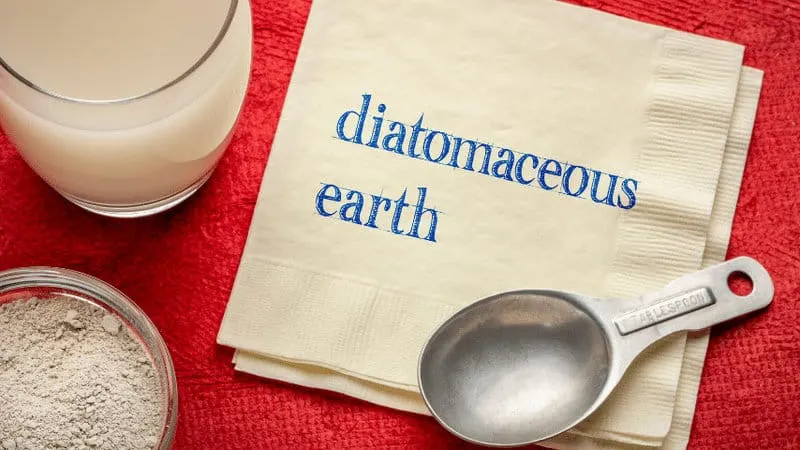
Chemical pesticides can be effective against pests, but they can also contaminate the soil.
Because of this, it’s best to try other pest removal methods before you spray your plants.
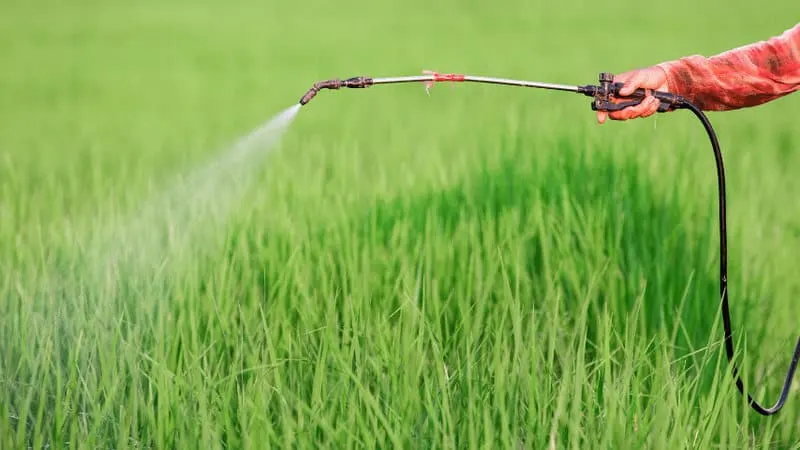
Read more about what is eating plant leaves at night.
Frequently Asked Questions
How Can I Heal a Plant With Holes In Its Leaves?
Use pruning shears to cut away leaves that have been damaged. The plant will grow new leaves as a result of this.
Should I Prune Leaves That Aren’t Damaged?
If your plant has seen a lot of growth, pruning leaves can improve air circulation around the plant. Pruning can also be a way to shape a plant.
How to stop insects from eating plant leaves?
Use insecticidal soap and neem oil to prevent insects from eating plant leaves. Beneficial nematodes such as amblyseius swirskii, cryptolaemus montrouzieri, steinernema carpocapsae can also be used. As well as companion planting.
What causes tiny holes in the leaves of plants?
Plant-sucking insects such as aphids, thrips, mealybugs, whiteflies, scale, leafhoppers, psyllids, and spider mites cause tiny holes in leaves.
What is eating my plant leaves at night?
Animals eating plant leaves at night are beetles, slugs, caterpillars, earwigs, and caterpillars, Mexican bean beetles, flea beetles, Japanese beetles, and the tarnished plant bug and slugs. But also mammals such as deer, rabbits, and voles.
What vegetables garden bugs eat plant leaves?
Vegetable garden bugs that eat plant leaves are beetles, grasshoppers, ants, sawflies, caterpillars, aphids, snails, and slugs.
What is eating my indoor plant leaves?
The most common pests that eat plant leaves indoors are aphids, scales, mealybugs, thrips, whiteflies, fruit flies, and spider mites.
With the list of 12 common garden pests, you should now be able to answer the question, “What is eating my plant leaves?”. The most common culprits are insects, slugs, snails, and rodents.

Daniel has been a plant enthusiast for over 20 years. He owns hundreds of houseplants and prepares for the chili growing seasons yearly with great anticipation. His favorite plants are plant species in the Araceae family, such as Monstera, Philodendron, and Anthurium. He also loves gardening and is growing hot peppers, tomatoes, and many more vegetables.

